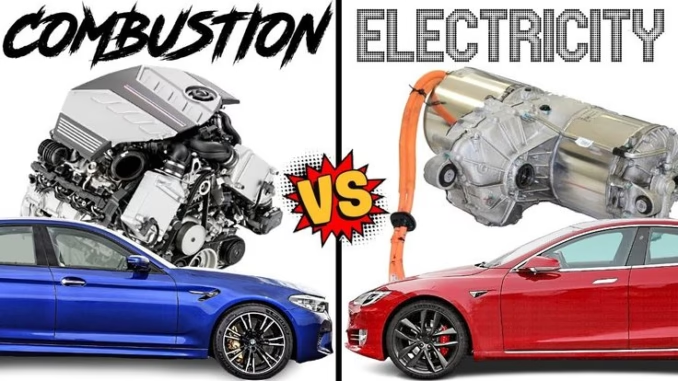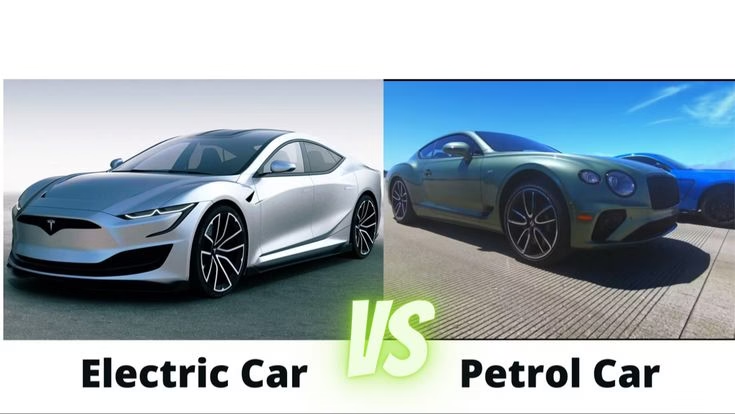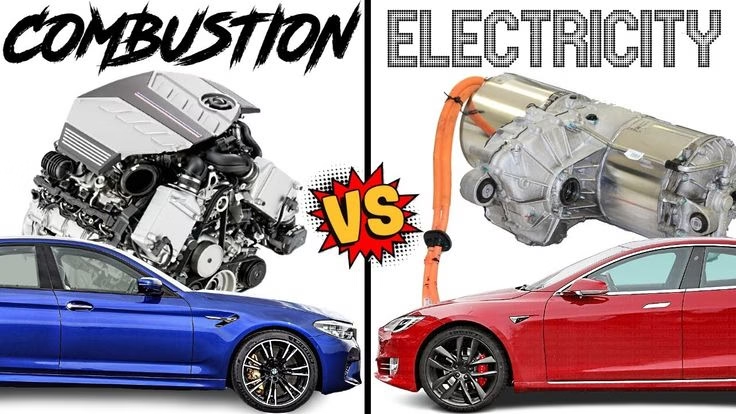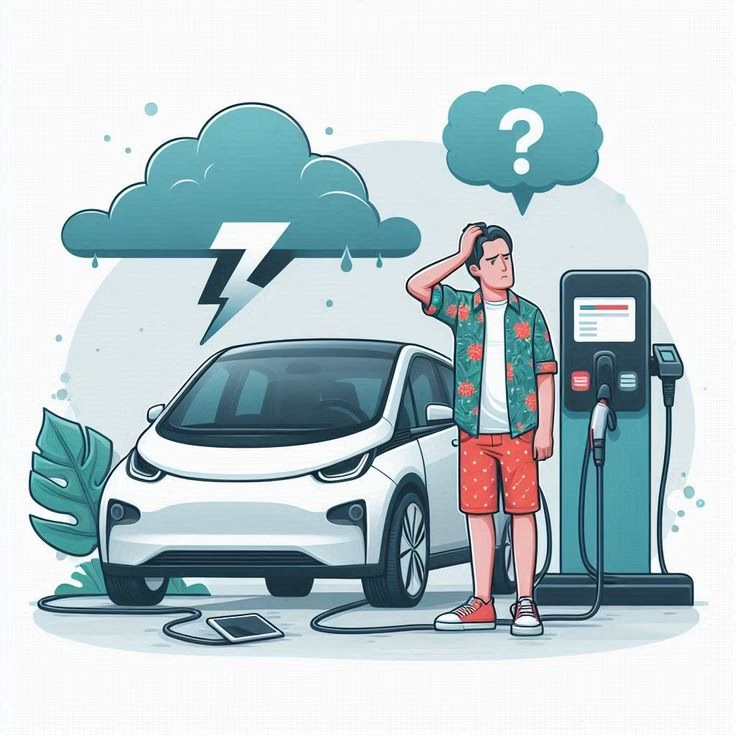
The global automotive industry stands at a pivotal juncture, where traditional internal combustion engine (ICE) vehicles are steadily making way for electric vehicles (EVs). This shift is driven by environmental concerns, advancements in technology, and changing consumer preferences. In this blog, we’ll explore the future of ICE cars and EVs, diving into the trends, challenges, and opportunities shaping their destinies.

The Decline of ICE Cars: Inevitable but Gradual
For over a century, ICE cars have dominated roads worldwide, thanks to their affordability, accessibility, and well-established infrastructure. However, their future is becoming increasingly uncertain as the environmental impact of fossil fuels garners global attention. Governments, environmental organizations, and consumers alike are pushing for cleaner alternatives, signaling a decline in ICE vehicles.
Regulatory Pressures and Bans
One of the most significant drivers of the ICE car phase-out is government regulations. Countries like Norway, the UK, and Germany have announced plans to ban the sale of new petrol and diesel cars by the 2030s. Similarly, cities worldwide are introducing low-emission zones where ICE vehicles face restrictions or additional charges. These regulations are intended to accelerate the adoption of EVs while reducing greenhouse gas emissions and improving urban air quality.
Technological Limitations
While ICE technology has evolved significantly, it’s reaching a plateau. Efficiency improvements are now incremental rather than transformative, and they cannot overcome the fundamental issue of greenhouse gas emissions. Innovations in biofuels and synthetic fuels offer some hope, but these technologies are unlikely to achieve the scale and cost-effectiveness required to sustain ICE dominance.
Consumer Sentiment
As awareness of climate change grows, consumers are becoming more conscious of their carbon footprints. Many are opting for EVs as a greener alternative, not only due to their environmental benefits but also because of their growing affordability and convenience. This shift in sentiment further undermines the demand for ICE vehicles.

The Rise of EVs: An Electrifying Revolution
Electric vehicles are no longer a niche market. They’re rapidly becoming mainstream, thanks to advances in battery technology, declining costs, and supportive policies. Here’s a closer look at the factors fueling the rise of EVs.
Technological Advancements
Battery technology has seen remarkable progress in recent years, leading to higher energy densities, faster charging times, and longer ranges. These improvements address the primary concerns consumers had about EVs—range anxiety and charging convenience. Solid-state batteries, currently under development, promise to push these advancements even further by offering better performance, safety, and durability.
Declining Costs
The cost of EV batteries, which accounts for a significant portion of a vehicle’s total price, has dropped dramatically. According to BloombergNEF, battery pack prices fell by nearly 89% between 2010 and 2022. As these costs continue to decrease, EVs are expected to reach price parity with ICE vehicles, eliminating one of the biggest barriers to adoption.
Infrastructure Expansion
The growth of EV charging networks is another critical enabler. Governments and private companies are investing heavily in charging infrastructure, with ultra-fast chargers and wireless charging technologies becoming more common. Initiatives like Tesla’s Supercharger network and public charging stations in urban and rural areas are making EV ownership more convenient than ever.
Policy Support
Governments worldwide are incentivizing EV adoption through subsidies, tax breaks, and other financial benefits. For instance, China, the world’s largest EV market, offers generous incentives to both manufacturers and consumers. Similarly, the US Inflation Reduction Act includes provisions to accelerate EV adoption through tax credits and investments in clean energy.

Consumer Appeal
Modern EVs are not only eco-friendly but also technologically advanced, offering features like autonomous driving, over-the-air updates, and enhanced connectivity. These features appeal to tech-savvy consumers and make EVs an attractive alternative to ICE vehicles.
Challenges Ahead for EVs
Despite their rapid growth, EVs face several challenges that must be addressed to ensure their widespread adoption.
Battery Supply Chain
The production of EV batteries relies on critical minerals like lithium, cobalt, and nickel. Mining and processing these materials pose environmental and ethical challenges, as well as supply chain risks. Diversifying supply sources and investing in recycling technologies are essential to mitigate these issues.
Charging Infrastructure in Remote Areas
While urban centers are seeing rapid growth in charging infrastructure, rural and remote areas often lag behind. Ensuring equitable access to charging facilities is crucial for widespread EV adoption.
Grid Capacity
The transition to EVs will place additional demand on electricity grids, which may require upgrades to handle the increased load. Integrating renewable energy sources and implementing smart grid technologies can help address this challenge.
The Coexistence of ICE and EVs: A Transitional Phase
While the shift toward EVs is undeniable, ICE cars are unlikely to disappear overnight. Instead, a transitional period of coexistence is expected.
Emerging Markets
In developing countries, where affordability and infrastructure remain significant barriers, ICE cars may continue to dominate for decades. Manufacturers could focus on hybrid models or low-emission ICE vehicles tailored to these markets.
Specialty and Niche Applications
Certain applications, such as heavy-duty trucks, aviation, and motorsports, may continue to rely on ICE technology until alternative solutions become viable. Synthetic fuels and hydrogen may play a role in decarbonizing these sectors.
The Road Ahead
The automotive industry’s future will be shaped by the interplay between ICE and EV technologies, consumer behavior, and policy decisions. Here’s what we can expect:
- Phased Transitions: Developed countries will lead the EV transition, while developing nations may experience a more gradual shift. Hybrid vehicles could serve as a stepping stone for markets not yet ready for full electrification.
- Technological Innovation: Continuous advancements in battery technology, charging infrastructure, and alternative fuels will determine the pace of the transition.
- Sustainability Focus: The entire EV ecosystem, from battery production to end-of-life recycling, will need to align with broader sustainability goals to maximize environmental benefits.
- Policy and Incentives: Governments will play a pivotal role in shaping the future by offering incentives for EV adoption and investing in necessary infrastructure.
- Consumer Empowerment: Educating consumers about the benefits and practicality of EVs will be crucial in overcoming hesitations and accelerating adoption.
Conclusion
The transition from ICE cars to EVs represents a fundamental shift in the automotive industry, driven by the need for sustainable solutions. While challenges remain, the progress made thus far offers a glimpse of an electrified future. By embracing innovation, collaboration, and environmental stewardship, we can ensure a smooth and equitable transition to a cleaner, greener world.

U Aung